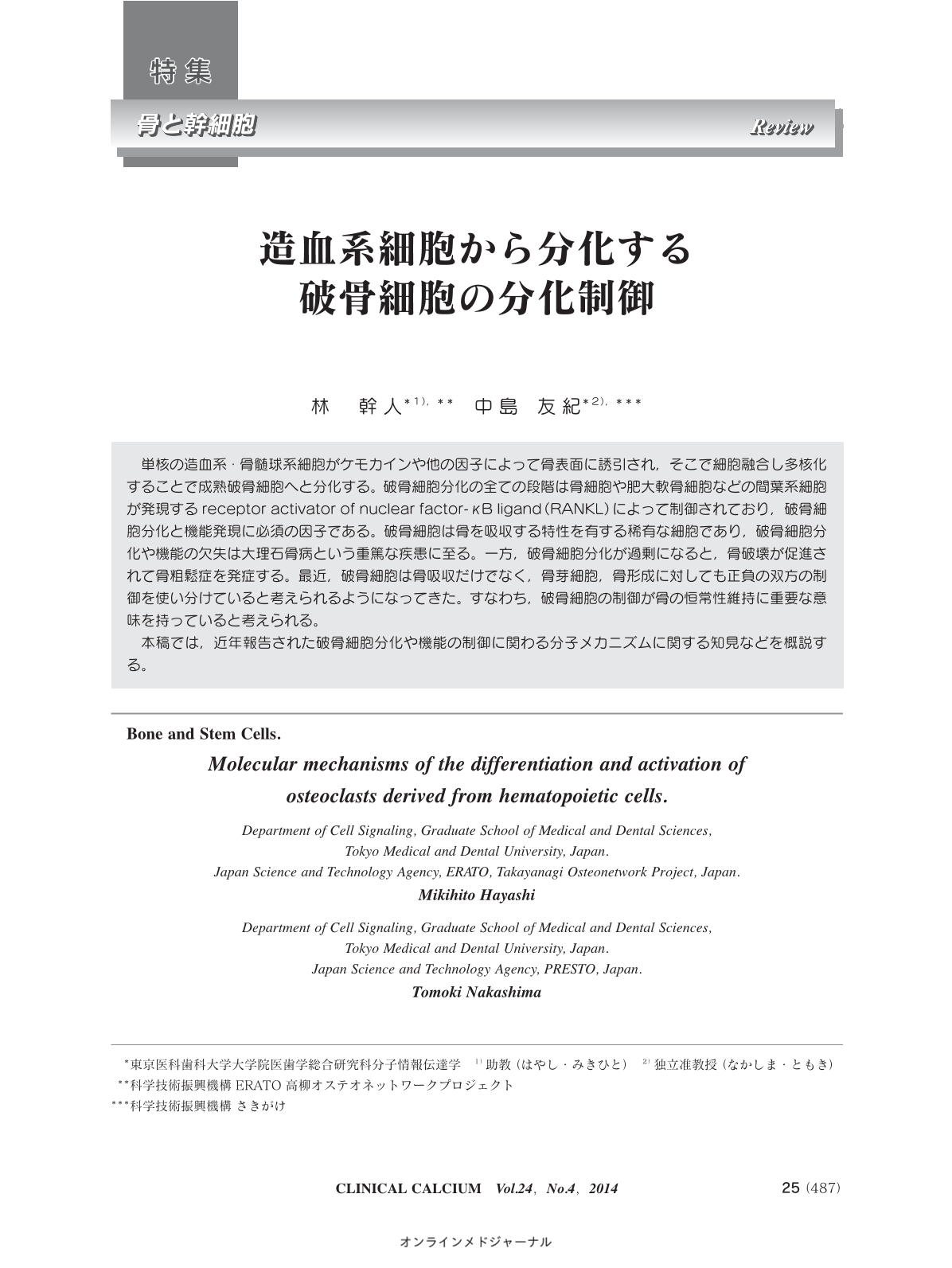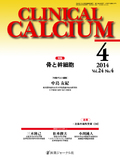Japanese
English
- 有料閲覧
- Abstract 文献概要
- 1ページ目 Look Inside
- 参考文献 Reference
単核の造血系・骨髄球系細胞がケモカインや他の因子によって骨表面に誘引され,そこで細胞融合し多核化することで成熟破骨細胞へと分化する。破骨細胞分化の全ての段階は骨細胞や肥大軟骨細胞などの間葉系細胞が発現するreceptor activator of nuclear factor-κB ligand(RANKL)によって制御されており,破骨細胞分化と機能発現に必須の因子である。破骨細胞は骨を吸収する特性を有する稀有な細胞であり,破骨細胞分化や機能の欠失は大理石骨病という重篤な疾患に至る。一方,破骨細胞分化が過剰になると,骨破壊が促進されて骨粗鬆症を発症する。最近,破骨細胞は骨吸収だけでなく,骨芽細胞,骨形成に対しても正負の双方の制御を使い分けていると考えられるようになってきた。すなわち,破骨細胞の制御が骨の恒常性維持に重要な意味を持っていると考えられる。 本稿では,近年報告された破骨細胞分化や機能の制御に関わる分子メカニズムに関する知見などを概説する。
Mononuclear myeloid lineage cells, which are attracted to bone surfaces by chemokines and other factors, differentiate into multinucleated bone resorbing osteoclasts by cell fusion. Receptor activator of nuclear factor-κB ligand(RANKL),which is expressed in mesenchymal cells, including osteocytes and hypertrophic chondrocytes, is essential for osteoclast differentiation and function. Osteoclasts have the capacity to resorb bone and impaired osteoclast differentiation and/or function leads to osteopetrosis, a rare disease in which mineralized bone cannot be removed. In contrast, excessive osteoclastogenesis causes diseases such as osteoporosis. Recent findings suggest that osteoclasts can also function as positive and negative regulators of osteoblastic bone formation. Thus, understanding of the molecular mechanisms that regulate osteoclastogenesis is important to develop therapeutic approaches to prevent bone diseases. This paper reviews recent findings of the molecular mechanisms regulating osteoclast differentiation and function.



